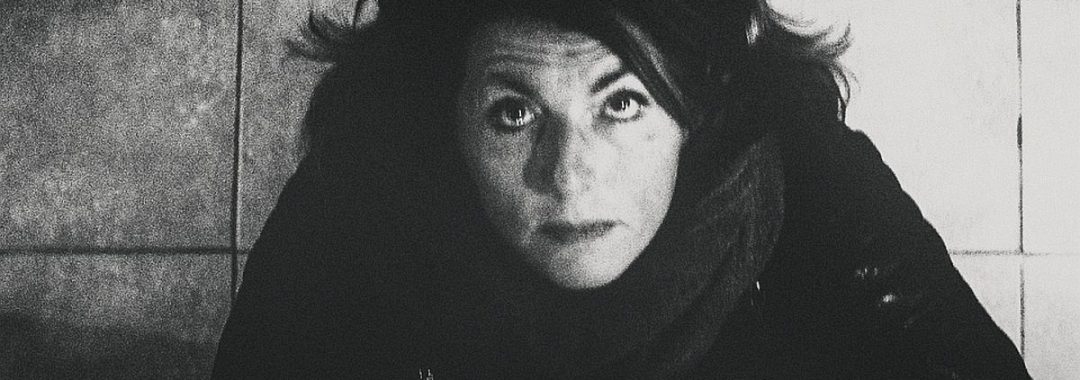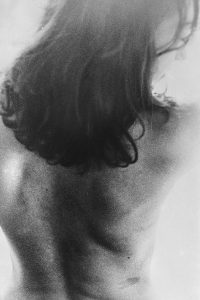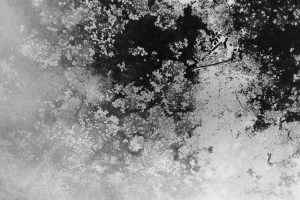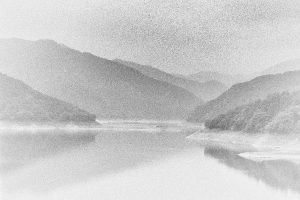Photographs of the intimate human relationship display the feeling of giving yourself emotionally to the other person. Of opening up truly and completely. Margaret Lansink‘s purely intuitive way of taking photographs presents us with an honest reflection of her own inner emotions, creating an impulse to go on a personal journey. Somewhere between the reality and a dream.
What has led you to take up photography?
I photographed already as a dedicated amateur my whole life. I followed several courses and joined a PhotoClub, but never did I show it to other people, because I always felt it was not good enough. Until some 10 years ago, when I decided to break up my marriage and say goodbye to my old life, I moved from a little town in the east of Holland to Amsterdam and started studying photography professionally. At that time photography felt for me the ultimate way to express my emotions. My camera followed (and still follows) me every step of my way, purely intuitively capturing memories and moments and filling the voids in my life. Photographing simply became a necessity for me.
You studied at PhotoAcademy in Amsterdam and at LeMasterklass in Paris for a year. Who influenced you and guarded you?
I started PhotoAcademy just three months after my divorce and our teacher (Matt de Groot) was able not only to build on our photographic signature but also to challenge us in looking at ourselves and building our self-esteem as the necessary ingredient for our photography. He was tough and fair, my hero for that period. In 2016 I started LeMasterklass; Klavdij Sluban and Nestan Nijaradze gave me the security that my images were very okay and pushed me further in my photography. I feel very, very grateful to them.
Why did you decide to coach young photographers?
Because I think everybody deserves the chance to become motivated and good in the things they want to do. I think in this order because if you are really more than 100% motivated, you can become good in what you want. Creativity is not just in the genes, you can also fuel it by trying and daring a lot. If you have a dream, just face it, and try to achieve it. So, if I can give young photographers an extra impulse to create themselves through my enthusiasm and drive, I enjoy doing so. It is a win-win situation. They will be aware that almost everything is possible if you really want to and I think it’s great to follow their growth as a professional.
Your images present us with the exploration of self and honestly captured raw emotions. What is your approach to photography and which techniques do you use to create it?
Klavdij and Nestan emphasized that my images should be honest and distinctive. And that has become my guiding principle: honest and distinctive, these are the keywords for me. With this perspective, I always make the first selection. If I do not feel authenticity, I immediately skip them. Then I look at which ones are worth editing. Some images I hardly edit, with other I change the contrast or intensity, to get the atmosphere that I look for: mostly an overflow between reality and dream. I achieve that by shooting on film. The grain makes it deeper emotional for me. And I notice that at this moment black and white works best for me. However, this does not mean that I will never photograph in color again.
You have already published a few books. Do you cooperate with a publishing house or is it completely in your production?
I love handmade books. Books that you feel, smell, turn and turn and close up in your heart. Real treasures. I can also hardly constrain myself when I find a beautiful handmade book from a fellow photographer. At this moment I have only made small editions of up to 25 pieces. Because I have so much demand for “Borders of Nothingness” that I am currently working on an edition of 100 copies, of which 20 will be sold as a special edition in a box. Again totally on my own, together with a little bookbinding house. At this moment my partner and I are working with Kaunas Gallery to publish a beautiful book of our project “The art of empathy”. Here it is very important for us that it also can be experienced as a treasure, even though there will be 500 books printed.
What is your opinion about the importance of a book published in-house?
I attach great importance to this. I love that we communicate in books and in printed material. That we are not just concerned with what can be seen online. Photography is also a medium for me that you should be able to see and feel up close.
Your photo project “Hesitation” makes us think about death as well. How do you perceive this topic?
I can understand that. And afterward, I can see it too. Because I am so intuitive in photography, I may not have meant so at that moment, but looking back I can say that it is no wonder that you see this in this series as I have lost some very dear people in recent years, both to life and to death. This question from you makes it even more clear to me that the whole process of a project goes into the emotion of that moment in that period of my life. That I do not always know where the photo is taking me. That is why I want to remain completely independent. I want to be able to make what I am ready for at that moment and not what is commercially sound in the market. For the coming period, I have simultaneously two projects that I want to dedicate my time to. These projects are both very close to me; my relationship with my family (I am the youngest of 13 children) and with whom I never felt truly at home. Secondly the relationship between nature and the natural course of human (female) life. Capturing in my own way those places where nature still can be nature and by photographing women in their natural transition in life. Strong women who take what comes without fillers or botox.
What do you think about the boom of the expressive form of photography in Europe?
I see it as a wave. People have the need to express themselves explicitly and rawly, just like in the past feminism. It is a kind of activist way of showing a reality. I think it is very okay that we make visible what keeps us busy, that it can no longer remain invisible. Whether in the metoo movement, in gender questions, or in journalism. In my opinion, it is good that we are confronted. Faced to feel.
Is the work of Michael Ackerman close to you?
It could be. To be honest, I never felt very attracted to his photography. It feels pretty hard and raw. But now that you ask whether the work comes close to my work, you might be able to say that he is the masculine, raw version of my feminine, delicate side. In my exhibition, during Voies Off Arles I received many comments that my images are very feminine and sensitive and also evoke strong emotions of love, but also loss.
Your grainy pictures are like fragments of raw and painful thoughts raising questions about the presence or absence of the others. Which kind of answers were you trying to find when creating the book “Borders of Nothingness”?
During an artist residence for our project “the art of empathy” in Japan, I was hardly able to work because of my daughter’s decision to suspend contact, already for some years. I had to do something with this sharp emotional pain. There, I discovered the wabi sabi philosophy, a philosophy urging us to accept things the way they are, and to seek beauty in imperfections. “With this awareness that both beauty and suffering, are impermanent and imperfect, I was able to go beyond the boundaries of my own fear and bid a temporarily farewell at the borders of nothingness”.
The soft and delicate shapes of the female body are a great part of your work. What makes you so attracted to them?
For me, these women bodies are a sign of my love, not just only for my daughters. They are also an expression of love and respect for all women on this earth. That women in their most natural form are fantastic and beautiful without being erotic. Respect to all women.
The style of your photographs seems mysterious like a memory rising from the fog. What do you want us to take away when looking at your series?
With this intuitive way of photography, I like to invite the spectator to embark on a journey through his/her own intricate web of memories, emotions, expectations, fears, and desires. All with the intention to ultimately give meaning to our life.
Margaret Lansink is a fine art photographer who works and lives in a tiny village just above Amsterdam. Lansink received a bachelor degree from the PhotoAcademy in Amsterdam and she studied for a year at LeMasterklass in Paris. Lansink participates in exhibitions, residencies, and competitions in Holland and abroad. Her work has been shown in Amsterdam, Rotterdam, Leiden, UK, New York, Vancouver, Japan, Tbilisi, Kaunas and in her old hometown of Oldenzaal. Additionally, she often coaches young photographers in developing their signature and portfolio.
All photographs © Margaret Lansink.















